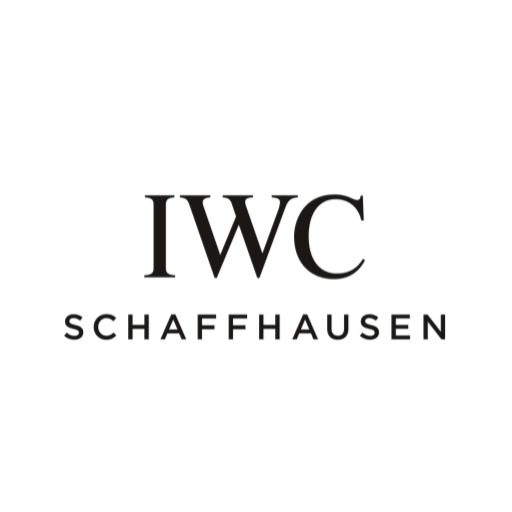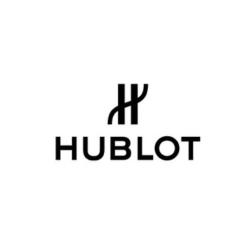-
×
 TAG Heuer Carrera Calibre Heuer 02 CBN2A1B.BA0643
2 × $7,679.00
TAG Heuer Carrera Calibre Heuer 02 CBN2A1B.BA0643
2 × $7,679.00 -
×
 TAG Heuer Carrera Calibre Heuer 02 CBN2A5A.FC6481
2 × $8,979.00
TAG Heuer Carrera Calibre Heuer 02 CBN2A5A.FC6481
2 × $8,979.00 -
×
 Omega De Ville Prestige Co-Axial Power Reserve 424.13.40.21.02.002
2 × $4,580.00
Omega De Ville Prestige Co-Axial Power Reserve 424.13.40.21.02.002
2 × $4,580.00 -
×
 Seiko Prospex Willard SPB151J1
2 × $2,016.00
Seiko Prospex Willard SPB151J1
2 × $2,016.00 -
×
 Rolex Yacht-Master 37 M268655-0002
1 × $38,993.00
Rolex Yacht-Master 37 M268655-0002
1 × $38,993.00 -
×
 TAG Heuer Aquaracer Professional 300 GMT WBP2010.BA0632
1 × $4,995.00
TAG Heuer Aquaracer Professional 300 GMT WBP2010.BA0632
1 × $4,995.00 -
×
 Patek Philippe Nautilus 5712R-001
1 × $267,822.00
Patek Philippe Nautilus 5712R-001
1 × $267,822.00 -
×
 Tissot Le Locle Powermatic 80 T006.407.22.033.01
1 × $807.16
Tissot Le Locle Powermatic 80 T006.407.22.033.01
1 × $807.16 -
×
 TAG Heuer Aquaracer Calibre 5 WAY2018.BA0927
4 × $2,492.00
TAG Heuer Aquaracer Calibre 5 WAY2018.BA0927
4 × $2,492.00 -
×
 New Blancpain Fifty Fathoms Bathyscaphe 5000-1230-B52A
2 × $18,124.00
New Blancpain Fifty Fathoms Bathyscaphe 5000-1230-B52A
2 × $18,124.00 -
×
 Tudor Pelagos LHD M25610TNL-0001
1 × $7,250.00
Tudor Pelagos LHD M25610TNL-0001
1 × $7,250.00 -
×
 Tissot Sideral S Powermatic 80 T145.407.97.057.00
1 × $1,299.00
Tissot Sideral S Powermatic 80 T145.407.97.057.00
1 × $1,299.00 -
×
 Montblanc 1858 Iced Sea Automatic Date 129372
1 × $3,670.00
Montblanc 1858 Iced Sea Automatic Date 129372
1 × $3,670.00 -
×
 Burberry The City Watch BU9226
1 × $295.00
Burberry The City Watch BU9226
1 × $295.00 -
×
 Tissot Seastar 1000 Chronograph T120.417.11.051.00
1 × $755.00
Tissot Seastar 1000 Chronograph T120.417.11.051.00
1 × $755.00 -
×
 Burberry The City Watch BU9030
1 × $289.00
Burberry The City Watch BU9030
1 × $289.00 -
×
 Tissot Seastar 1000 Chronograph T120.417.37.051.00
1 × $715.79
Tissot Seastar 1000 Chronograph T120.417.37.051.00
1 × $715.79 -
×
 Hublot Classic Fusion Titanium Blue 45mm 511.NX.7170.RX
1 × $10,352.00
Hublot Classic Fusion Titanium Blue 45mm 511.NX.7170.RX
1 × $10,352.00 -
×
 Omega Seamaster 300 41mm Men's Watch 233.22.41.21.01.001
1 × $8,177.00
Omega Seamaster 300 41mm Men's Watch 233.22.41.21.01.001
1 × $8,177.00 -
×
 Mido Multifort M038.429.11.041.00
1 × $1,391.00
Mido Multifort M038.429.11.041.00
1 × $1,391.00 -
×
 New Omega De Ville 424.20.33.20.52.003
2 × $6,338.00
New Omega De Ville 424.20.33.20.52.003
2 × $6,338.00 -
×
 New Omega Planet Ocean 215.63.46.22.01.001
1 × $21,210.00
New Omega Planet Ocean 215.63.46.22.01.001
1 × $21,210.00 -
×
 Amazing Seiko Prospex Street SNJ029P1
1 × $699.00
Amazing Seiko Prospex Street SNJ029P1
1 × $699.00
Brands
The History of Bulova
Bulova, established in 1875, is a renowned American watchmaker known for its innovation and precision. The brand gained prominence for introducing the first fully electronic watch and the Accutron, a groundbreaking tuning fork movement. Over the years, Bulova has maintained a reputation for producing high-quality timepieces, blending traditional craftsmanship with technological advancements.
Exploring the history of Bulova watches is important for several reasons. It provides insights into the evolution of watchmaking techniques and technological advancements. Understanding Bulova’s innovations, like the Accutron movement, contributes to the broader narrative of horological progress. Additionally, delving into the brand’s history offers enthusiasts a deeper appreciation for the craftsmanship and design elements that distinguish Bulova timepieces. Overall, studying Bulova’s past enhances one’s understanding of watchmaking history and the impact of certain brands on the industry.
Founding Years (1875-1920)
Bulova’s early years trace back to its founding by Joseph Bulova in 1875. Joseph, an immigrant from Bohemia, opened a small jewelry shop in New York City. Recognizing the rising popularity of watches, he began crafting timepieces and established the J. Bulova Company in 1911. The brand quickly gained acclaim for its commitment to innovation and precision. Joseph Bulova’s vision and dedication laid the foundation for the brand’s success, marking the beginning of Bulova’s influential journey in the watchmaking industry.
In the early 20th century, Bulova underwent significant expansion and introduced notable innovations. In 1919, the company launched the first full line of ladies’ watches, contributing to its growing popularity. A major breakthrough came in 1927 with the creation of the world’s first clock radio, showcasing Bulova’s commitment to merging timekeeping and technology.
However, Bulova’s most groundbreaking moment occurred in 1960 when they introduced the Accutron, the first electronic watch powered by a tuning fork. This innovation revolutionized timekeeping precision, showcasing Bulova’s prowess in advancing horological technology. These early expansions and innovations solidified Bulova’s reputation as a pioneering force in the watchmaking industry.
Pioneering Technology (1920-1950)
Bulova made horological history in 1960 with the introduction of the Accutron, the world’s first fully electronic watch. The Accutron utilized a tuning fork instead of a traditional balance wheel, providing unparalleled precision. This breakthrough marked a significant advancement in timekeeping technology, establishing Bulova as an industry leader in electronic watches. The Accutron’s accuracy set new standards, and its impact resonates as a milestone in the evolution of watchmaking.
During World War II, Bulova played a crucial role in the war effort by dedicating its resources and expertise to support the military. The company shifted its production to manufacture precision instruments and timekeeping devices for the armed forces. Bulova produced military watches, aircraft instruments, and naval chronometers, contributing to the accuracy and coordination of military operations.
The U.S. government recognized Bulova’s contributions and awarded the brand the Army-Navy “E” Award for Excellence in wartime production. This acknowledgment highlighted Bulova’s commitment to precision manufacturing and its significant impact on supporting the war through advancements in watchmaking technology.
Accutron Era (1950-1970)
Bulova launched the Accutron in 1960, marking a historic moment in watchmaking as the world’s first electronic watch. The Accutron utilized a tuning fork mechanism powered by a battery, providing unprecedented accuracy compared to traditional mechanical watches. Its humming sound became iconic, and its accuracy was unparalleled, earning it a reputation as the “watch that hums.”
The Accutron’s success extended beyond its technological innovation; it also gained popularity for its sleek design and reliability. It became a status symbol and found favor among astronauts, earning the distinction of being the first watch worn on the moon during the Apollo 11 mission in 1969. The Accutron’s launch and subsequent success solidified Bulova’s position as a trailblazer in watchmaking technology.
Bulova’s Accutron played a notable role in space exploration and NASA missions during the 1960s. The Accutron’s precision and reliability made it a preferred timekeeping device for astronauts. Astronaut Gordon Cooper wore a Bulova Accutron during the Mercury-Atlas 9 mission in 1963, making it the first American wristwatch in space.
The Accutron’s accuracy was critical for coordinating mission events, and its success led to its adoption in subsequent space missions. It became the official watch for the Gemini and Apollo programs, including the Apollo 11 mission that landed the first humans on the moon in 1969. The Accutron’s influence on space exploration highlighted Bulova’s commitment to technological innovation and its significant impact on the historic achievements of NASA missions.
Quartz Revolution (1970-1990)
In the 1970s, Bulova, like many other watchmakers, adapted to the quartz revolution. The advent of quartz technology presented a shift in timekeeping precision, and Bulova embraced this innovation. The brand introduced its own line of quartz watches, combining the accuracy of quartz movements with Bulova’s commitment to quality and design.
Bulova’s quartz watches gained popularity for their reliability and affordability, catering to a broader consumer market. While continuing to produce mechanical watches, Bulova’s incorporation of quartz technology reflected the industry’s evolution and its responsiveness to changing consumer preferences. This adaptability allowed Bulova to maintain its prominence in the watchmaking industry amid the widespread adoption of quartz movements.
Bulova’s impact on the watch industry has been significant, reflecting its ability to adapt to technological advancements and changing consumer preferences. The introduction of the Accutron marked a groundbreaking moment, influencing the industry’s perception of electronic watches and setting new standards for precision.
Bulova’s role in space exploration further enhanced its reputation, associating the brand with technological excellence and reliability. The brand’s adaptation to quartz technology in the 1970s reflected its responsiveness to market trends, catering to a broader consumer base with accurate and affordable timepieces.
Overall, Bulova’s legacy encompasses a balance of innovation, craftsmanship, and adaptability, contributing to its enduring influence on the watch industry and maintaining appeal among diverse consumer preferences.
Rebranding and Modernization (1990-Present)
Bulova has experienced changes in ownership and management over the years. In 1979, the Joseph Bulova School of Watchmaking, the training arm of Bulova, acquired the company from Loews Corporation. In 2008, the Japanese conglomerate Citizen Watch Co. Ltd. acquired Bulova, adding the renowned American brand to its portfolio.
Under Citizen’s ownership, Bulova has continued to uphold its legacy of innovation while benefitting from the resources and global reach of its parent company. These changes in ownership and management have influenced Bulova’s strategic direction and global presence, showcasing its ability to evolve and thrive within the dynamic watch industry.
Bulova has introduced modern collections and engaged in collaborations to stay relevant in the contemporary watch market. The brand has launched various lines featuring innovative designs, materials, and advanced technology, appealing to diverse consumer tastes.
Collaborations with designers and influencers have also played a role in refreshing Bulova’s image. These partnerships often result in limited-edition or special models that blend Bulova’s craftsmanship with contemporary trends, attracting new audiences.
By continuously updating its collections and embracing collaborations, Bulova demonstrates a commitment to staying at the forefront of watch design and catering to the ever-changing preferences of today’s consumers.
Iconic Bulova Models
Bulova has produced several key watches that have left a lasting legacy in the world of horology. Some notable timepieces include:
- Accutron Spaceview (1960): The first commercially available electronic watch, showcasing the tuning fork movement and innovative design.
- Bulova Oceanographer “Devil Diver” (1972): Known for its distinctive orange dial and impressive water resistance, this dive watch has become a cult favorite among collectors.
- Bulova Computron (1976): An iconic digital watch with a distinctive trapezoidal case, representing the bold and futuristic design trends of the 1970s.
- Bulova Precisionist (2010): Featuring advanced quartz technology, this collection boasts impressive accuracy, with some models offering chronograph functionalities and unique design elements.
- Bulova Lunar Pilot (2016): A homage to the Bulova worn during the Apollo 15 mission, this modern version is a popular choice for enthusiasts and a testament to Bulova’s historic connection to space exploration.
These key watches reflect Bulova’s commitment to innovation, design, and precision, contributing to the brand’s enduring legacy in the watchmaking industry.

 TAG Heuer Carrera Calibre Heuer 02 CBN2A5A.FC6481
TAG Heuer Carrera Calibre Heuer 02 CBN2A5A.FC6481  Omega De Ville Prestige Co-Axial Power Reserve 424.13.40.21.02.002
Omega De Ville Prestige Co-Axial Power Reserve 424.13.40.21.02.002  Seiko Prospex Willard SPB151J1
Seiko Prospex Willard SPB151J1  Rolex Yacht-Master 37 M268655-0002
Rolex Yacht-Master 37 M268655-0002  TAG Heuer Aquaracer Professional 300 GMT WBP2010.BA0632
TAG Heuer Aquaracer Professional 300 GMT WBP2010.BA0632  Patek Philippe Nautilus 5712R-001
Patek Philippe Nautilus 5712R-001  Tissot Le Locle Powermatic 80 T006.407.22.033.01
Tissot Le Locle Powermatic 80 T006.407.22.033.01  TAG Heuer Aquaracer Calibre 5 WAY2018.BA0927
TAG Heuer Aquaracer Calibre 5 WAY2018.BA0927  New Blancpain Fifty Fathoms Bathyscaphe 5000-1230-B52A
New Blancpain Fifty Fathoms Bathyscaphe 5000-1230-B52A  Tudor Pelagos LHD M25610TNL-0001
Tudor Pelagos LHD M25610TNL-0001  Tissot Sideral S Powermatic 80 T145.407.97.057.00
Tissot Sideral S Powermatic 80 T145.407.97.057.00  Montblanc 1858 Iced Sea Automatic Date 129372
Montblanc 1858 Iced Sea Automatic Date 129372  Burberry The City Watch BU9226
Burberry The City Watch BU9226  Tissot Seastar 1000 Chronograph T120.417.11.051.00
Tissot Seastar 1000 Chronograph T120.417.11.051.00  Burberry The City Watch BU9030
Burberry The City Watch BU9030  Tissot Seastar 1000 Chronograph T120.417.37.051.00
Tissot Seastar 1000 Chronograph T120.417.37.051.00  Hublot Classic Fusion Titanium Blue 45mm 511.NX.7170.RX
Hublot Classic Fusion Titanium Blue 45mm 511.NX.7170.RX  Omega Seamaster 300 41mm Men's Watch 233.22.41.21.01.001
Omega Seamaster 300 41mm Men's Watch 233.22.41.21.01.001  Mido Multifort M038.429.11.041.00
Mido Multifort M038.429.11.041.00  New Omega De Ville 424.20.33.20.52.003
New Omega De Ville 424.20.33.20.52.003  New Omega Planet Ocean 215.63.46.22.01.001
New Omega Planet Ocean 215.63.46.22.01.001  Amazing Seiko Prospex Street SNJ029P1
Amazing Seiko Prospex Street SNJ029P1 



